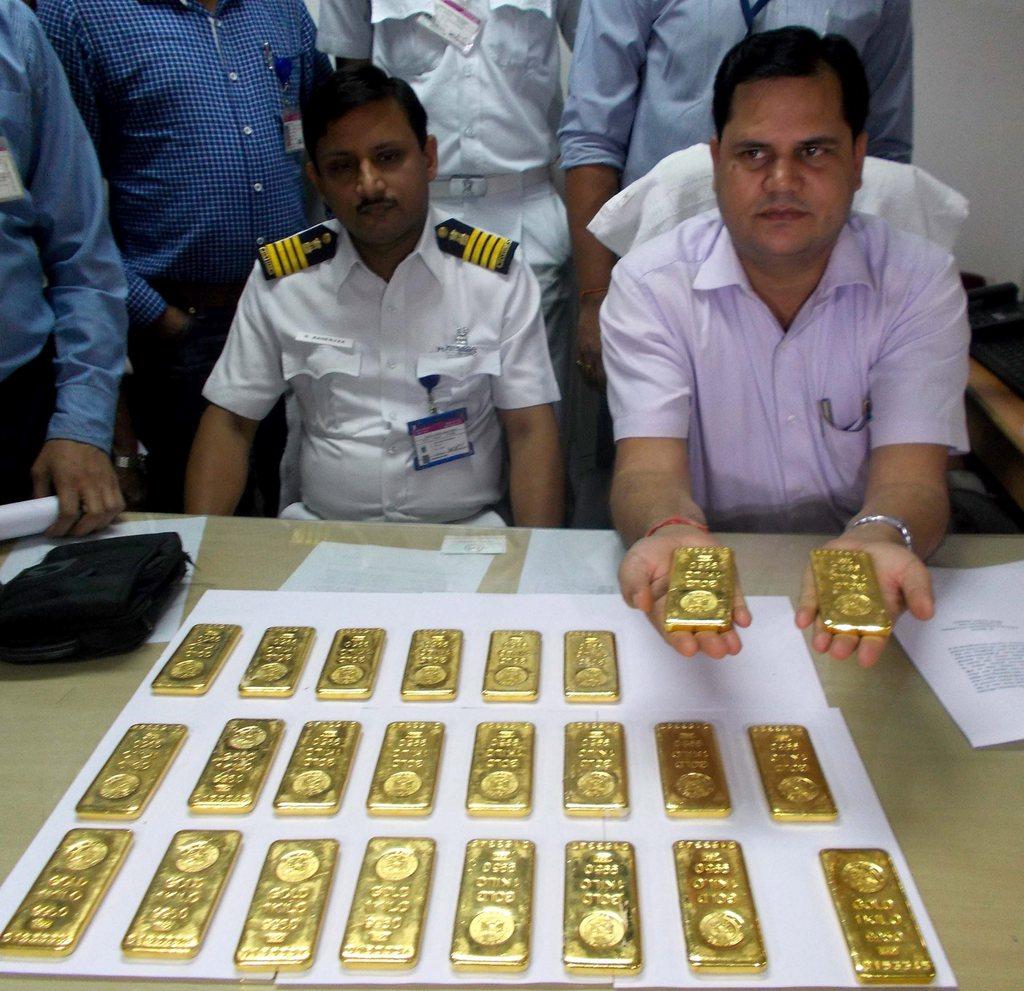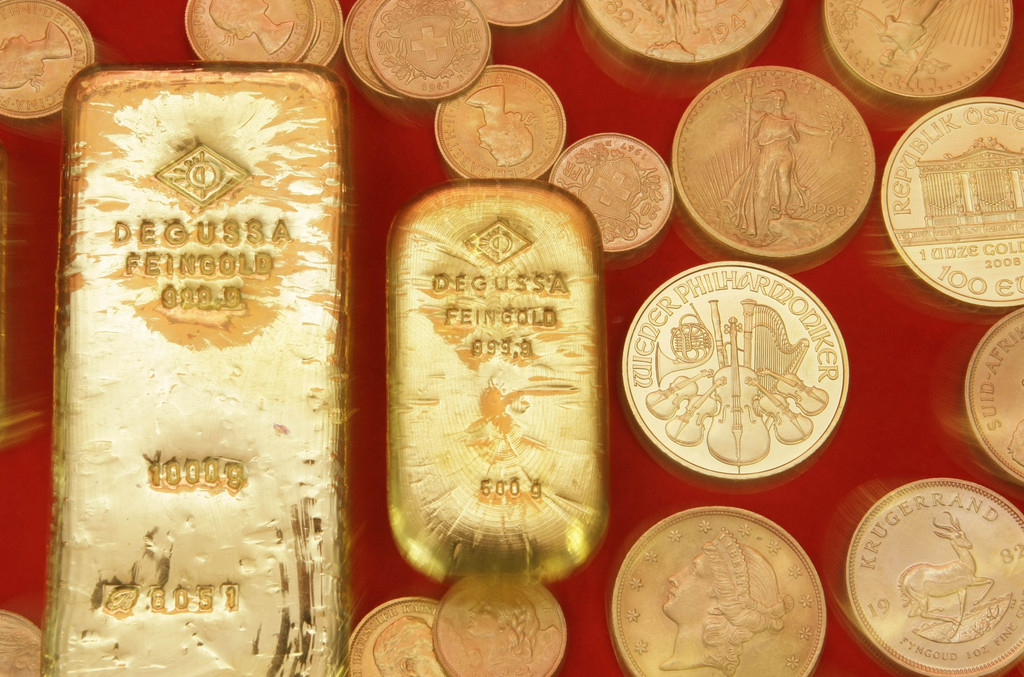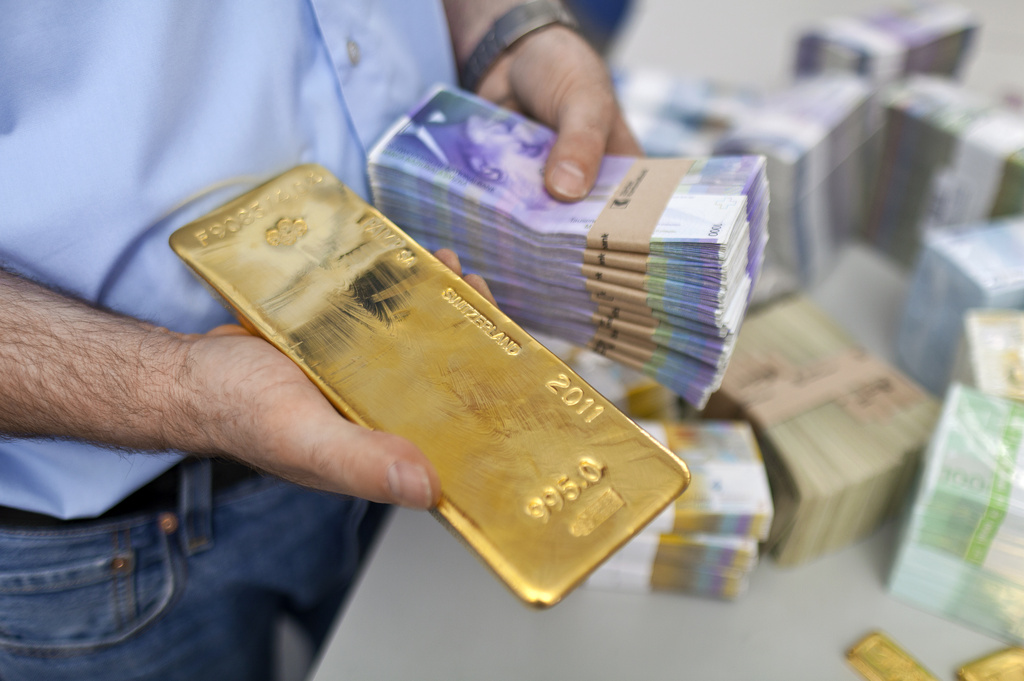Rise of Swiss gold exports to India raises questions

Switzerland is one of the world’s biggest centres for refining gold and exports significant amounts to India - one of the world’s biggest importers. How much of this contributes to trade-based money laundering?
Gold imports by India have doubled in the past 15 years, even though the price of gold has climbed and the rupee has strengthened. In this context, a sharp rise in the export of gold from Switzerland to India has raised eyebrows, with concerns of money being laundered through gold.
There is a perception among experts that the gold economy in India is significantly based on unaccounted resources. Dev Kar is the chief economist at Global Financial Integrity, a non-profit Washington-based group that tracks illicit financial flows in the world.
The gold trade – India
Higher import duties and quantitative restrictions on gold are suspected of fuelling the smuggling of imported gold. Last year the Indian government increased the import duty on gold to 10% to reduce overseas purchases, in a bid to control its current account deficit that had widened to nearly 5% of its GDP. The restrictions came in at a period when the Indian currency was strengthening, making exports less competitive. Gold imports shrank by 20% as a result. Now, although the current account deficit has narrowed (to less than 2% of GDP), the government continues to keep restrictions in place, due to unabated concerns of gold smuggling.
swissinfo.ch: What is the scale of illicit financial flows in India?
Dev Kar: The underground economy in India accounts for around 50% of the official GDP which is among the highest in the developing world. On average, $34.4 billion dollars in illicit funds have been transferred out of India every year over the past 10 years. Almost all of the outflows take place through the deliberate misinvoicing of trade. These estimates refer to outflows only.
swissinfo.ch: How widespread is trade-based money laundering between India and its trading partners?
D.K.: Trade-based money laundering is one of the surest and safest ways to trade in illegal gold. According to some estimates, trade misinvoicing accounts for 80% of illicit outflows.
Trade-based money laundering is particularly active in India given the large scale of black money and close ties to several tax havens such as Mauritius, Dubai, Hong Kong and Singapore. Economic models and methods cannot pinpoint the destination of black money or how the funds are laundered.
swissinfo.ch: How does the commodity trade in precious metals contribute to illicit financial flows?
D.K.: Commodity trade in precious metals can mask the generation and transmission of illicit financial flows, particularly if the customs and other enforcement agencies in the partner countries are weak. Cross-border smuggling of precious metals also generates “suitcase cash”. There are no economic data or methods that can capture such activities.
Switzerland, like most tax havens, is a poor reporter of re-export data. A lot of gold imported from other countries simply passes through Switzerland, which India records as being imported from Switzerland, but the latter does not record as being re-exported from the country. That could be the main reason for the understatement of Swiss exports of gold to India.
Exports of gold [to India] in 2011-2013 are much lower than India’s imports of the same commodities for the same years. [Exports of gold in 2011-2013 were much lower than India’s imports of the same commodities – specified by Harmonized Codes 7108 and 7109 on various forms of gold – for the same years. Harmonized codes are an internationally standardized system of names and numbers to classify traded products.]
swissinfo.ch: Why is trade in gold so vulnerable to money laundering?
D.K.: The buoyant demand for gold in India can be attributed to factors including cultural reasons [gold is gifted at Indian marriages], a persistent high rate of inflation averaging nearly 10% every year during the last decade that has eroded investor confidence in financial assets, and massive amounts of black money. Unless the Indian inflation rate is arrested, the rupee/dollar exchange rate will continue sliding in the long run and gold may also be seen as a hedge against the slide.
Quantitative restrictions on gold imports and the higher duties on gold and gold products increase the domestic price of gold relative to international prices. This increases the gains from smuggling and encourages the illegal activity.
swissinfo.ch: There have been reports in the Indian media that suggest Swiss banks are employing a strategy of `layering’ through gold-based trade to disguise the identification of the real beneficial owners. How will addressing beneficial ownership in countries like Switzerland reduce trade-based money laundering, including through gold?
D.K.: Hardly any country insists that banks and financial institutions collect information on the beneficial ownership [a person who enjoys the benefits of ownership even though the title is in another name] of deposit accounts.
Layering of transactions, trusts, anonymous shell companies, derivatives and other complicated financial instruments, all make the identification of the ultimate or controlling owner of these accounts extremely difficult, if not impossible. Groups such as GFI have been pushing for rules and regulations on beneficial ownership at international forums.
Beneficial ownership regulations will tighten the loopholes in opening up anonymous accounts in Switzerland, which holds the proceeds of trade-based money laundering involving gold. If other countries also adopt beneficial ownership regulations it would complement the Swiss efforts and money laundering involving trade in gold will go down. The risk related to such transactions would be unacceptable to those engaging in such activities.
swissinfo.ch: What other specific steps should jurisdictions such as Switzerland take to minimize money laundering through assets such as gold?
D.K.: The Swiss authorities must require traders to declare volume, value, and unit value accurately and require them to sign the declaration. In cases of suspicious transactions, regulators must check with the customs authority of the country of destination (for example, India) as to the accuracy of information provided in the declaration. The unit value and deviation of unit value from arms-length world prices must be calculated. Any significant deviation should be investigated. Particular attention must be paid to high-risk countries such as India, UAE, Afghanistan, Pakistan, China, etc.
In June this year, Switzerland’s total trade in gold, silver and coins was CHF3.9 billion ($4.1 billion), of which India accounted for CHF1.62 billion. In August 2014 (cumulated results since January) Swiss exports for these goods stood at CHF38.5 billion – CHF9.2 billion to India, according to the Swiss Customs Administration. The Swiss government denies any “nefarious patterns” in its gold exports. Anne Césard, a spokesperson for the State Secretariat for International Financial Matters (SIF) said: “Gold statistics strongly vary from one month to another and therefore should be interpreted with caution. After a strong rise in June compared to the preceding months [in particular in kg, less so in price], exports of gold to India dropped in July by half in kg and even more in price.” It is a question of supply and demand, Césard added. According to SIF, gold was not included in Swiss foreign trade statistics before 2014.
On the statistical registration of imports and exports in Switzerland, SIF makes two distinctions: first, commodities that are imported and put in circulation and then re-exported are registered as imports when they enter into Switzerland and as exports when they leave Switzerland. Therefore re-exports are not excluded from the statistics. However, commodities that come into Switzerland and are stored in a free port without being cleared are not registered as imports. Upon leaving the Freeport, the output is not registered as export when the goods are shipped abroad.
Often, gold is produced in Africa, refined in Europe and consumed in Asia. Different legal frameworks bear upon the long supply chain of gold. “This makes it vulnerable to different kinds of verification procedures, not always stringent,” according to an Indian official who follows money laundering trails and spoke to swissinfo.ch on condition of anonymity.
“Anti-money laundering provisions in Switzerland apply to gold sellers. But those dealers who buy gold are often unsure of their supply chain,” says Olivier Longchamp, head of finance at the non-governmental organization, Berne Declaration. He says there are no legal requirements that oblige buyers – who can often be the sellers at a later stage – to ask questions about the source, mode of production or how the gold was purchased. Berne Declaration is pushing for the establishment of a dedicated regulator for the commodities market.

In compliance with the JTI standards
More: SWI swissinfo.ch certified by the Journalism Trust Initiative



You can find an overview of ongoing debates with our journalists here. Please join us!
If you want to start a conversation about a topic raised in this article or want to report factual errors, email us at english@swissinfo.ch.